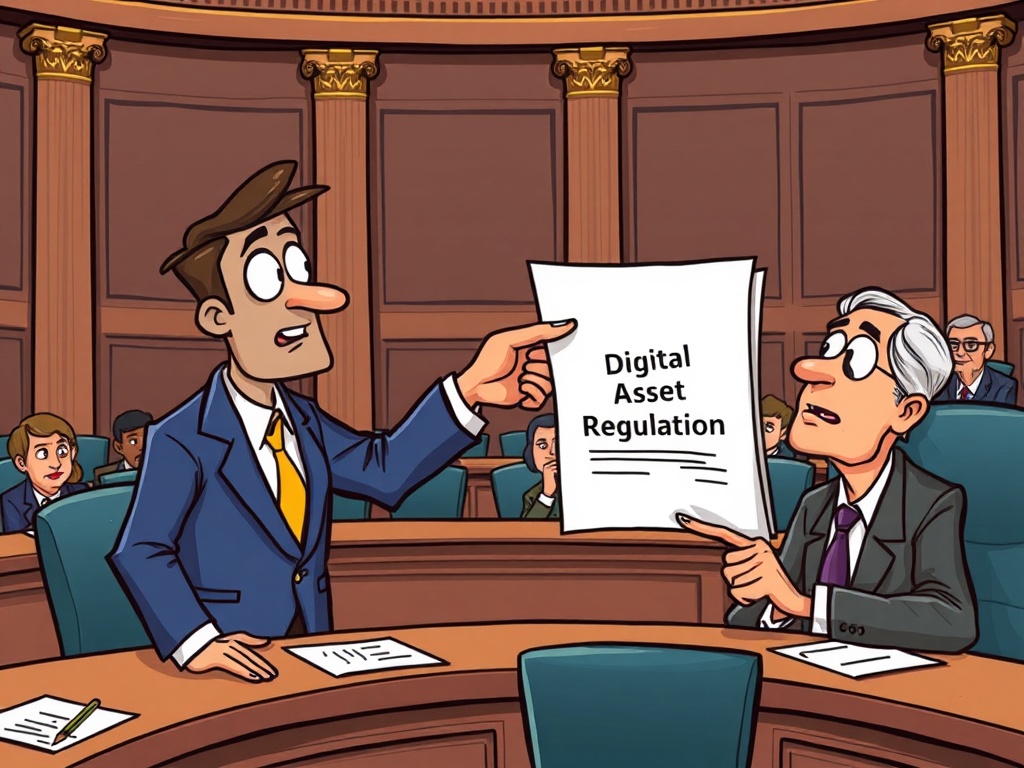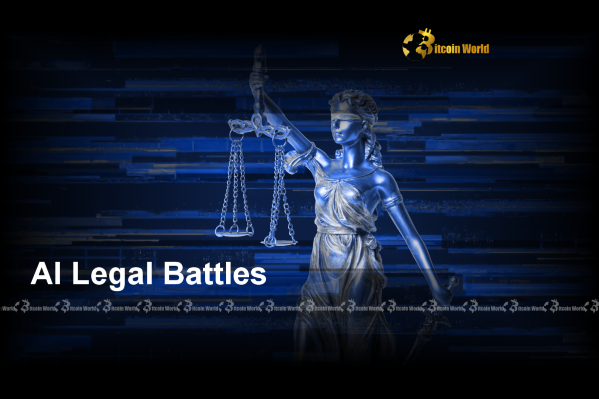BitcoinWorld

Digital Asset Regulation: Why a16z Demands Crucial Clarity in Crypto Legislation
The world of cryptocurrencies is constantly evolving, and with its rapid growth comes the urgent need for clear and effective digital asset regulation. For years, the crypto industry has grappled with regulatory uncertainty, a challenge that impacts everything from innovation to investor confidence. Recently, a significant voice in the venture capital space, Andreessen Horowitz (a16z), stepped forward to address this very issue, specifically urging the U.S. Senate to reconsider a key aspect of proposed legislation. Their message is clear: the current draft of digital asset market structure legislation, particularly its definition of an “ancillary asset,” could open dangerous loopholes and undermine the very protections it seeks to establish. This isn’t just about legal jargon; it’s about shaping the future of crypto, ensuring stability, and safeguarding those who participate in this dynamic market.
Why is Digital Asset Regulation So Complex?
Understanding the intricacies of digital asset regulation requires a look at the foundational challenges faced by lawmakers. Traditionally, the U.S. financial system has clear distinctions between securities and commodities, governed by different regulatory bodies like the Securities and Exchange Commission (SEC) and the Commodity Futures Trading Commission (CFTC). However, digital assets often blur these lines, creating a regulatory gray area. The long-standing Howey test, used to determine if an asset is an investment contract (and thus a security), was developed in 1946, long before the advent of blockchain technology. Applying this test to innovative crypto tokens has proven difficult and inconsistent.
This ambiguity has led to a patchwork of enforcement actions and a lack of clear guidelines for developers and investors alike. Without a unified framework for digital asset regulation, businesses struggle to innovate without fear of legal repercussions, and investors face heightened risks due to unclear classifications. This is precisely where a16z, a prominent venture capital firm with significant investments in the crypto space, enters the discussion. They advocate for a legislative approach that provides much-needed clarity, protecting both innovation and consumers.
Understanding the ‘Ancillary Asset’ Debate in Digital Asset Regulation
At the heart of a16z’s concern is the proposed “ancillary asset” definition within the draft digital-asset market structure legislation, specifically the CLARITY Act. This concept suggests that certain digital assets, while not full-fledged securities, might still possess some characteristics that warrant limited regulatory oversight. The idea is to create a middle ground, but a16z argues this middle ground could become a perilous trap. According to Cointelegraph, a16z warned the Senate Banking Committee that this definition could:
- Create Dangerous Loopholes: By attempting to categorize assets that are “not quite securities” but “not quite commodities,” the definition might inadvertently allow certain tokens to escape robust investor protections.
- Conflict with the Howey Test: If an “ancillary asset” still meets the criteria of an investment contract under the Howey test, classifying it differently could lead to legal inconsistencies and regulatory arbitrage.
- Undermine Investor Protections: The primary concern is that investors in these “ancillary assets” might not receive the same disclosures, transparency, and legal recourse afforded to those investing in traditional securities, leaving them vulnerable.
To illustrate the contrast, let’s consider the implications of the “ancillary asset” approach versus a more defined “digital commodity” framework, which a16z supports for digital asset regulation:
| Feature | “Ancillary Asset” (Proposed) | “Digital Commodity” (a16z Preferred) |
|---|---|---|
| Regulatory Status | A new, potentially ambiguous category with limited oversight. | Clear commodity status, regulated by CFTC, typically for decentralized assets. |
| Investor Protection | Potentially weaker, as full securities disclosures may not apply. | Stronger, as assets either meet full securities criteria or are clearly commodities. |
| Market Certainty | Increased uncertainty due to new, untested definitions and potential conflicts. | Greater certainty by relying on established commodity frameworks for truly decentralized assets. |
| Innovation Impact | Could stifle innovation if developers fear misclassification or inadequate legal pathways. | Encourages innovation by providing clearer rules for decentralized projects to operate. |
A Path Forward: a16z’s Vision for Digital Asset Regulation
Rather than introducing a potentially problematic “ancillary asset” category, a16z proposes a more streamlined and effective approach to digital asset regulation. Their recommendations focus on leveraging existing frameworks and introducing clarity where it’s most needed. Here are their key suggestions:
- Scrap the “Ancillary Asset” Category: The firm advocates for removing this definition entirely from the legislation. Their stance is that assets should either clearly be securities (and regulated by the SEC) or clearly be commodities (and regulated by the CFTC), avoiding a confusing middle ground.
- Adopt the U.S. CLARITY Act’s Narrower “Digital Commodity” Framework: a16z supports defining “digital commodity” more precisely within the CLARITY Act. This would provide a clearer path for truly decentralized digital assets to be regulated as commodities, similar to how traditional commodities like oil or gold are treated. This distinction is vital for assets that genuinely do not represent an investment in a common enterprise with an expectation of profit derived from the efforts of others.
- Codify a Control-Based Decentralization Model: This is perhaps one of the most innovative and practical proposals. a16z suggests that tokens should only lose their securities status once operational control is fully relinquished. This means that as a project matures and decentralizes – meaning no single entity or small group maintains control over its development, governance, or underlying network – its associated token could transition from a security to a commodity. This approach provides a tangible pathway for projects to achieve regulatory clarity over time, based on demonstrable decentralization rather than subjective interpretations.
This vision for digital asset regulation aims to foster innovation by providing a clear roadmap for projects, while simultaneously ensuring robust investor protection by keeping assets under securities law until they truly become decentralized. It’s about creating a framework that evolves with the technology, rather than forcing new tech into old, ill-fitting boxes.
Impact on Investors and the Crypto Market: What Does This Digital Asset Regulation Mean for You?
The debate surrounding digital asset regulation and a16z’s proposals has profound implications for everyone involved in the crypto ecosystem. For investors, clearer rules mean greater confidence and reduced risk. When assets are properly classified, investors can expect appropriate disclosures and protections, similar to those in traditional financial markets. This fosters a more transparent and trustworthy environment, potentially attracting a wider range of participants, including institutional investors who currently hesitate due to regulatory uncertainty.
For the broader crypto market, clear digital asset regulation can unlock significant growth. Developers and entrepreneurs can build innovative projects with a better understanding of the legal landscape, reducing the risk of unexpected enforcement actions. This clarity can accelerate the development of new applications, services, and technologies, solidifying the U.S. as a leader in the digital asset space. Without it, innovation may migrate to jurisdictions with more welcoming regulatory environments.
However, achieving this clarity isn’t without its challenges. There are diverse views within Congress and among regulatory bodies on how best to approach crypto. Reaching a consensus on definitions like “digital commodity” and “decentralization” will require extensive debate and compromise. Yet, the stakes are high: getting digital asset regulation right could lead to a thriving, secure, and innovative crypto economy, while getting it wrong could stifle growth and leave investors exposed.
For you, as a reader and potentially an investor or enthusiast, staying informed about these legislative developments is crucial. Understanding the nuances of these proposals allows you to engage in informed discussions and recognize the long-term implications for your digital asset holdings and interests.
In conclusion, a16z’s strong advocacy for refining the CLARITY Act’s definitions and removing the “ancillary asset” carve-out is a pivotal moment in the ongoing quest for effective digital asset regulation. Their call for a narrower “digital commodity” framework and a control-based decentralization model highlights a thoughtful approach to balancing innovation with investor protection. As the U.S. Senate continues to deliberate, the outcome of this debate will undoubtedly shape the future trajectory of the crypto industry, determining how digital assets are classified, regulated, and ultimately, how safely and effectively they can be utilized by millions worldwide. The push for clarity isn’t just a legal battle; it’s a foundational step towards building a more robust and trustworthy digital economy.
Frequently Asked Questions (FAQs)
Q1: What is the main concern a16z has with the CLARITY Act’s “ancillary asset” definition?
A1: a16z is concerned that the “ancillary asset” definition could create dangerous loopholes, conflict with the existing Howey test, and ultimately undermine investor protections by not subjecting these assets to full securities regulations, even if they share similar characteristics.
Q2: What is the Howey test and why is it relevant to digital asset regulation?
A2: The Howey test is a U.S. Supreme Court standard used to determine if a transaction qualifies as an “investment contract” and is therefore a security subject to SEC regulation. It’s relevant to digital asset regulation because it’s often used to classify crypto tokens, but its application to novel digital assets is a source of ongoing debate and legal uncertainty.
Q3: What alternative framework does a16z propose for digital asset regulation?
A3: a16z proposes scrapping the “ancillary asset” category, adopting a narrower “digital commodity” framework within the CLARITY Act, and codifying a control-based decentralization model. This model would allow tokens to lose securities status only once operational control is fully relinquished, providing a clear path for decentralization.
Q4: How would a control-based decentralization model work?
A4: Under a control-based decentralization model, a digital asset would initially be treated as a security. As the project matures and becomes truly decentralized—meaning no single entity or small group retains control over its development or governance—its associated token could then transition to a commodity status, thereby changing its regulatory oversight.
Q5: What are the potential benefits of clearer digital asset regulation for investors?
A5: Clearer digital asset regulation can lead to enhanced investor protection through appropriate disclosures and safeguards, similar to traditional markets. This increased transparency and reduced risk can build greater confidence, potentially attracting more participants and fostering a more stable and trustworthy crypto ecosystem.
Q6: Why is the U.S. CLARITY Act important for the crypto industry?
A6: The U.S. CLARITY Act is important because it is a key piece of proposed legislation aimed at providing a comprehensive framework for digital asset regulation in the United States. Its goal is to bring much-needed clarity to the classification and oversight of digital assets, which could significantly impact the future growth and stability of the crypto industry.
If you found this article insightful, please consider sharing it with your network! Your support helps us spread awareness about critical developments in the world of digital asset regulation and its impact on the future of finance.
To learn more about the latest crypto market trends, explore our article on key developments shaping digital asset regulation institutional adoption.
This post Digital Asset Regulation: Why a16z Demands Crucial Clarity in Crypto Legislation first appeared on BitcoinWorld and is written by Editorial Team





